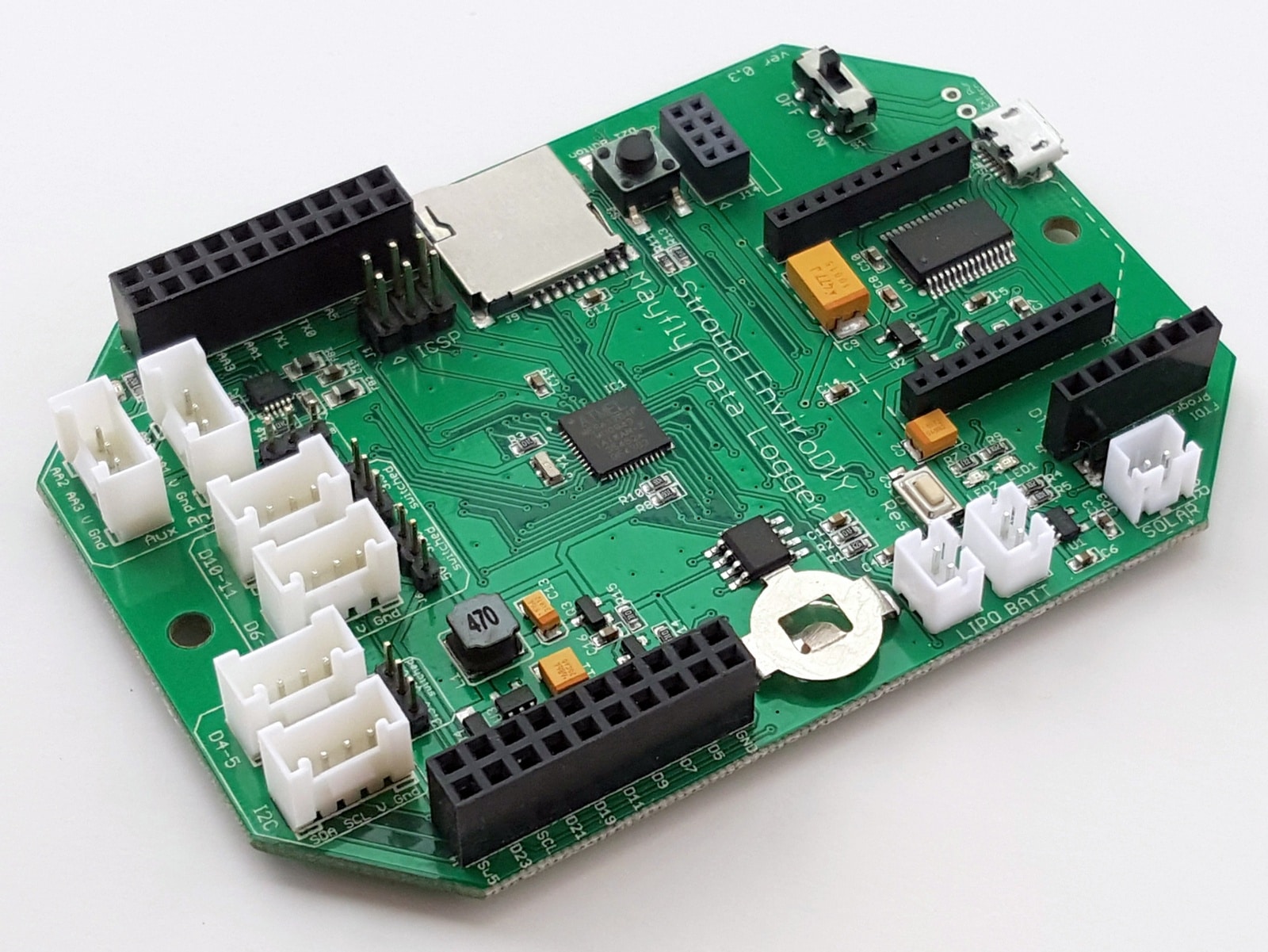-
Shannon Hicks wrote a new post 9 years ago
We are excited to introduce our new custom Arduino-based datalogger board, the EnviroDIY Mayfly Logger. It has a combination of features and capabilities that make it one of the most powerful and flexible logger […]

 Welcome to EnviroDIY, a community for do-it-yourself environmental science and monitoring. EnviroDIY is part of WikiWatershed, an initiative of Stroud Water Research Center designed to help people advance knowledge and stewardship of fresh water.
Welcome to EnviroDIY, a community for do-it-yourself environmental science and monitoring. EnviroDIY is part of WikiWatershed, an initiative of Stroud Water Research Center designed to help people advance knowledge and stewardship of fresh water. New to EnviroDIY? Start here

This is great news. I have just started an investigation into low cost and/or open source data loggers, partly in anticipation of a rolling program of hydrology data logger replacement and partly to promote / aid in citizen science and crowd sourced environmental data gathering. Very much looking forward to hearing more about this and hopefully getting to experiment a bit with it in 2016.
I agree with the previous post in that this is great news. I hope it is such that newbies can learn and implement in short order. I have long thought a basic logger capable of operating and recording water levels utilizing an ADC and current loop 4-20 mA transducers would be well received. I know I would like to be able to work with something on this line.
Most commercial options are far more complicated than necessary and far too expensive to allow for routine upgrade/replacement.
Nice to see. The adc seems to have a low Vref voltage drift – though needs to be calculated over the temperature of interest. For a 4-20mA need to be able to generate/switch ~15V to supply the sensor.
Should fit nicely with arduino. I’m wondering if there would be any interest in a instrument interface being RS485 with 12V and python for processing the serial stream? Seems like 20mA is a basic standard that is open by its simplicity, but if only there was something that could do the RS485.
I’m not sure if the questions regarding the 4-20mA circuit would be sufficed by something like this?
4-20mA Brick
Very good info on using RS-485 with arduino platforms is located here:
Nick Gammon RS-485
I’ve also been experimenting with the SODAQ Mbili, so really interested in the Mayfly. How can we get hold on one (or more) ?
Hi @sroberts, we hope to have that information available very soon!
Here’s an update for everyone wondering about the board availability. We went through one more round of design updates to add some extra features like an onboard FTDI-USB chip and a 5-volt boost regulator to generate 5v for any sensors or devices you want to power. The final Mayfly production run should be ready for purchase at an online retailer in about a month from now (early March). More updates will follow soon.
Can’t wait….Can you tell us which online retailer ? The 5V boost will be really useful. I’m using several Mbili with power boost to 5V to power long 1-wire sensor bus.
They are being manufactured right now, but we can’t announce availability and online store info until everything is finalized. There was a slight slowdown in the process due to the holiday in China and its effect on the supply chain, but we’re still hoping to have them for sale very shortly.
The boards are now available on Amazon: http://envirodiy.org/mayfly-boards-now-available-on-amazon/
Any update on Mayfly availability? Thanks!
And a second request for update…desperate to get my hands on one (or more)…
We’re still waiting for the first big manufacturing run to get delivered. Once it does, we’ll get it to the distributor as soon as we can. In the meantime, we’ve been working on documentation and instructions, so look for postings that info on this site early next week.
Good news – the boards finally arrived a few days ago, I’m now working on getting everything ready for the online sales, details to follow shortly!